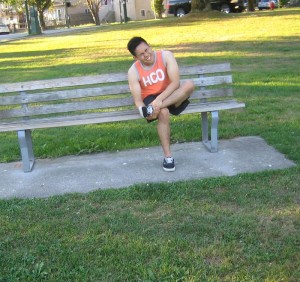Corns and calluses are hardened and thick layers of the skin that occurs when the skin protects itself against friction and pressure and occurs on the feet and toes or hands and fingers.
Symptoms of corns and calluses
- Thick, rough area in the skin
- Tenderness or pains under the skin
- Raised bump that is hard
- Dry, flaky or waxy skin
Corns and calluses has distinct differences
Corns are relatively smaller and have a rigid center that is surrounded by swollen skin. Corns develop on the feet that do not bear weight like the upper part and sides of the toes, and it can also occur between the toes and can be very painful when pressed.

Calluses are sometimes painful and occur on the soles of the feet like under the heels and balls, on the palms, or even on the knees. They vary in size and shape and larger than corns.
Causes of corns and calluses
Repetitive action like pressure and friction can cause corn and calluses to grow and some of these pressure and friction are triggered by the following:
- Wearing ill-fitting shoes and high heels that cause compression of the foot and when the shoes are too loose and can cause repeated sliding and rubbing of the foot against the shoe and the foot can have the tendency to rub the seam or stitches of the shoe.
- Shoes and sandals without socks can also cause friction on the feet and socks that do not fit properly can also cause this problem.
- When playing instruments by the use of hand, it can cause calluses on the hand due to the repeated pressure of playing instruments and even writing can cause calluses on the hand.
Treatment and home remedies
These are some of the measures that you can use on corns and calluses. By enrolling in a first aid course, you can learn more about these conditions.
- A callus-removing medication like putting a patch on the area that contains 40 percent salicylic acid.
- While bathing, rub the corn or callus with pumice stone, nail file or emery board to get rid of the dead skin. Do not utilize pumice stone on corn or calluses if the person has diabetes since there is a higher risk of infection.
- Soak the hands and feet in warm, soapy water to soften corn and calluses. This will make the removal of the thickened skin a lot easier.
- Applying moisturizer to the hands and feet to keep them soft and well moisturized.
- Wearing comfortable shoes and socks until the corn and callus have totally healed.
Prevention of corns and calluses
- Wearing shoes that give the toes plenty of space where it can wiggle or has enough space.
- Wear protective coverings like non-medicated corn padding or bandages on areas that rub against the footwear as well as wearing of toe separators and lamb’s wool to be placed between the toes.
- Wearing padded gloves and padding the handles of tools using cloth tape when using hand tools.